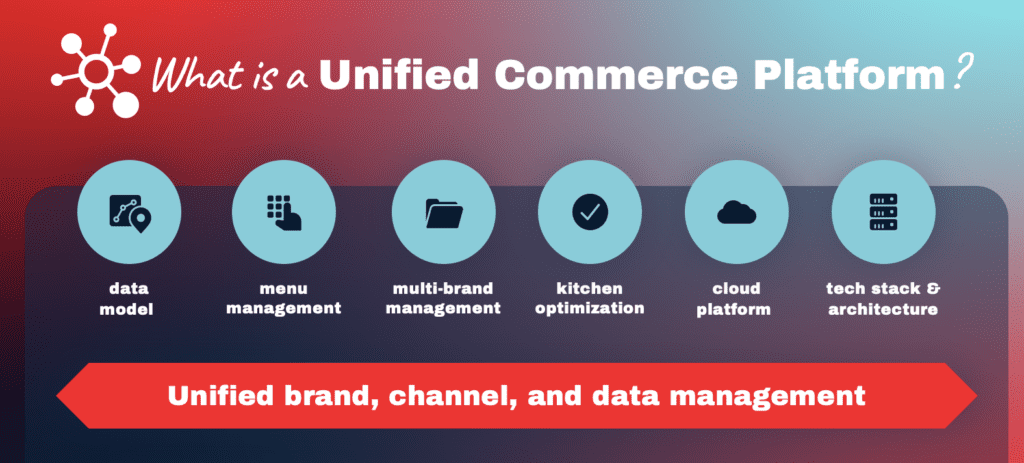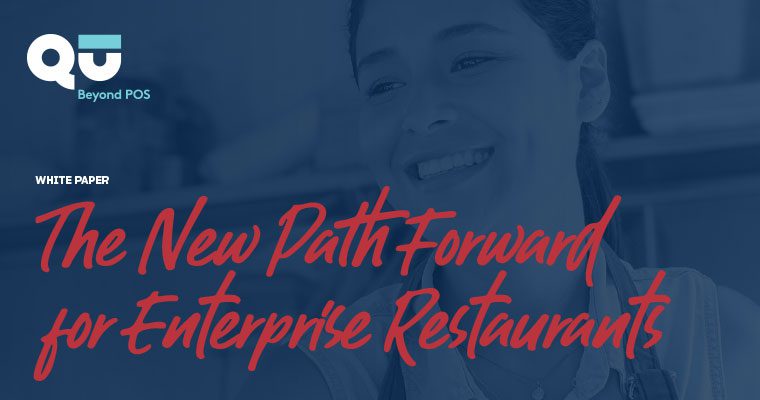The unified commerce platform emerged out of a clear need for change in restaurant technology approaches.
At Qu, we’ve been advocating for a shift in perspective away from “POS as a point solution” for a while. We’ve dubbed this as the Big POS Reframe, and it’s a call to view POS as simply one part of the system, versus the entirety of the system.
Today, the unified commerce and data platform takes its place as the foundation for modern, scalable restaurant operations.
Now, let’s dig a little deeper. Let’s define what a unified commerce platform is and the power it holds for the growth and success of enterprise restaurants.
What is a Unified Commerce Platform?
At Qu, “unified” isn’t a term we throw around casually. To have a truly unified platform means creating a data-first system, from the ground up, that connects every aspect of your restaurant operations, ultimately improving management efficiencies and customer experiences.
Here’s how we define a unified commerce platform:
A data-driven foundational framework that unifies the ordering journey across brands, channels, and systems – resulting in native, real-time access to all order data.

The unified platform delivers a centralized architectural framework designed exclusively for enterprise restaurants, enabling:
- Centralized in-store and digital ordering for streamlined fulfillment and order accuracy.
- Consolidation of operations processes and data, enabling cost savings, labor efficiencies, and revenue lift.
- More accurate reporting, analytics, and measurement practices using common APIs and data
A word about data
Data, when normalized at its source and not after the fact, serves as the vital heartbeat of the unified commerce platform. For too long, restaurants have been forced to navigate a maze of disparate data models created by a disjointed tech stack.
The inefficiency of this data flow and analysis hamstrung each step of the order journey, making informed decisions for multi-brand managers nearly impossible, thus burning profits and limiting scalability.
A unified commerce platform corrects this long-standing disconnect in data processing and analytics. By providing a comprehensive, 360-degree view of each normalized data point within restaurant operations, it fosters clear, fast, and ultimately, more profitable decision-making.
To learn more about unified data, check out this article.
Now that you have a better understanding of what a unified commerce platform is (hopefully!), let’s take a quick look at what it is not.
Here is what a unified commerce platform is NOT:
- It’s not all-in-one solution. It’s not a homegrown or single vendor all-in-one solution that does a little of everything, but the best of nothing. A unified commerce platform is a foundational platform that integrates best-in-class systems of YOUR choosing.
- It’s not a digital commerce-only. It’s not a Digital-Only platform no matter how many native and 3rd party ordering channels it unifies. Digital platforms are great, but a unified commerce platform combines the best of both worlds – on-premises and off-premises orders from any channel.
- It’s not built through mergers & acquisitions. It’s not pieces of acquired companies/products that are merged together into a Jenga-like tech stack, with multiple diverging codebases which lack the unified data foundation you need to scale into the future.
- It’s not owned by a payments company. You get to decide which payments partner you work with and are free to change and renegotiate your rates.
Top Benefits of a Unified Commerce Platform
- The flexibility and agility to run your restaurant, your way, with the best-in-class solutions of your choosing.
- Increased ordering and fulfillment speeds using a connected data platform. Imagine being able to measure every data point of the ordering journey. Now you can do it!
- Enterprise scalability & growth. Finally you can grow with confidence and without tech roadblocks.
- Innovation today and well into the future.
- Stability to keep your restaurant humming, even when network connections fail.
See our blog on Top 5 benefits for more details on each of the above.
Multi-unit restaurants desperately need unified ordering systems to drive speed, accuracy, and personalized experiences. Learn all about data-driven architecture and how it helps your business grow and thrive in this white paper.

